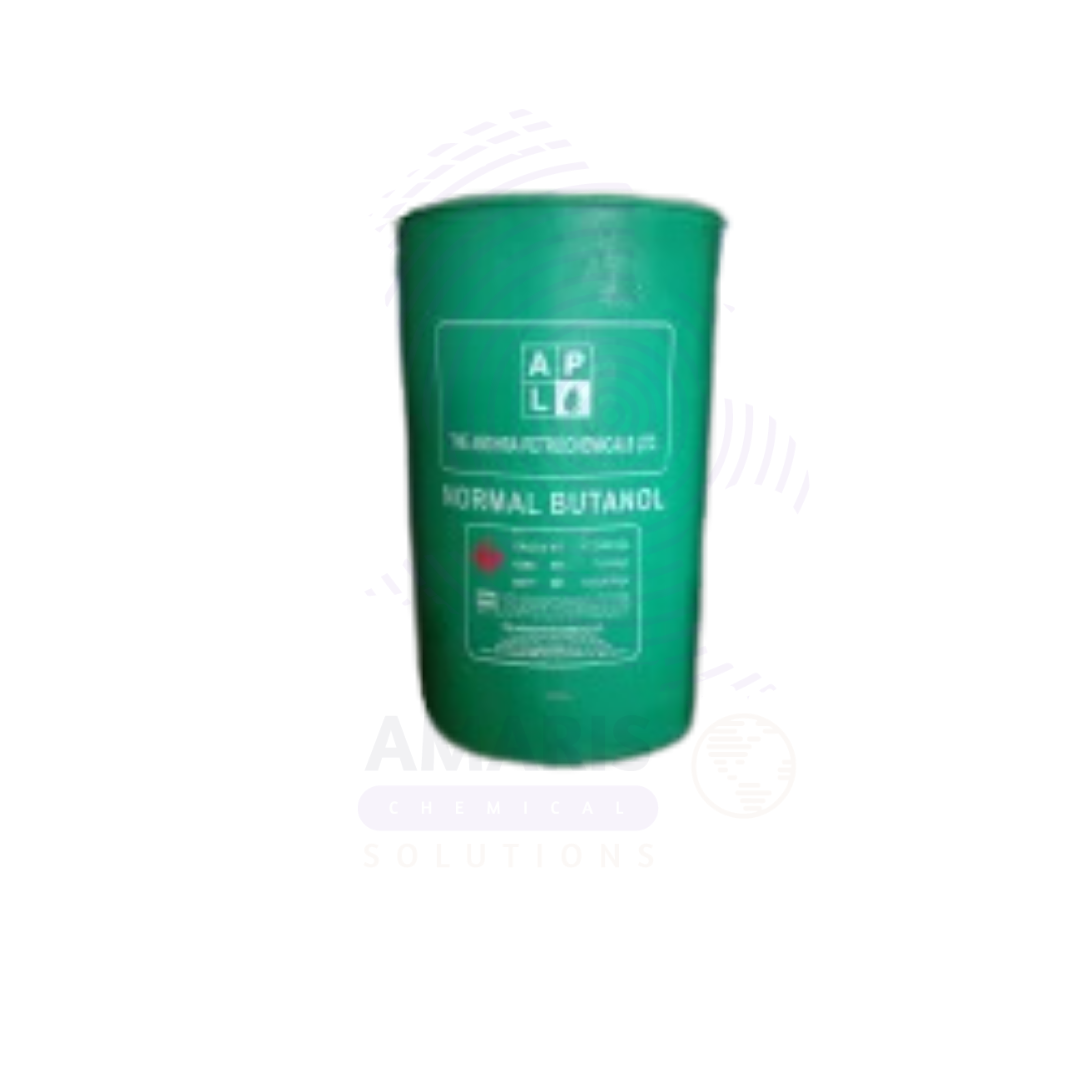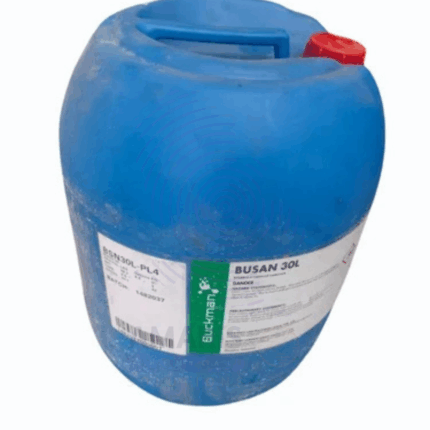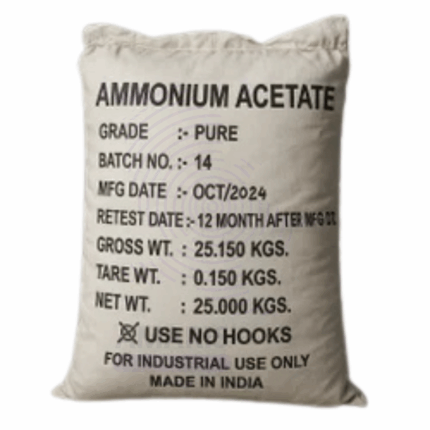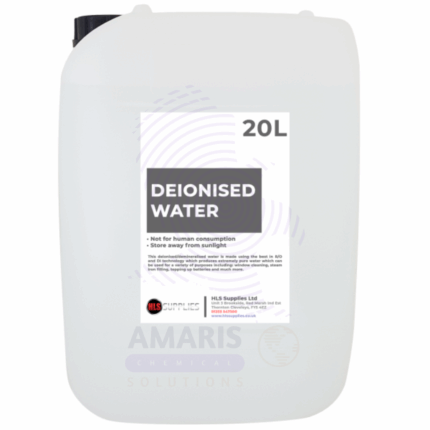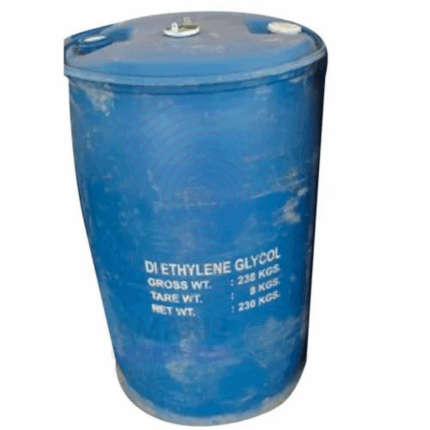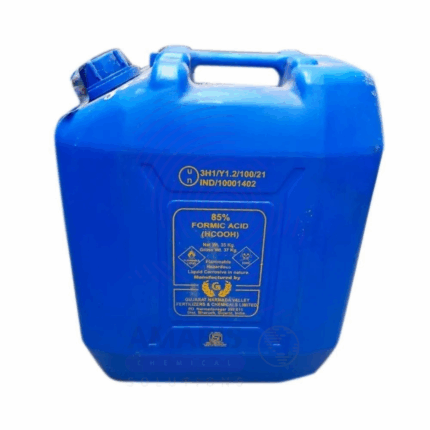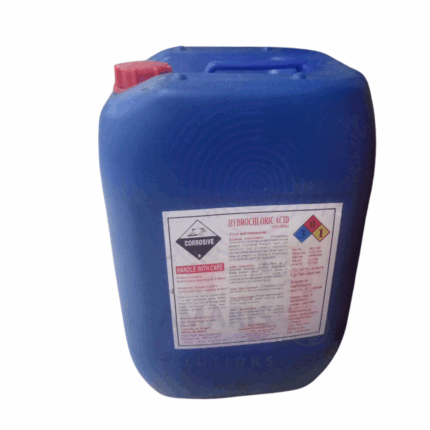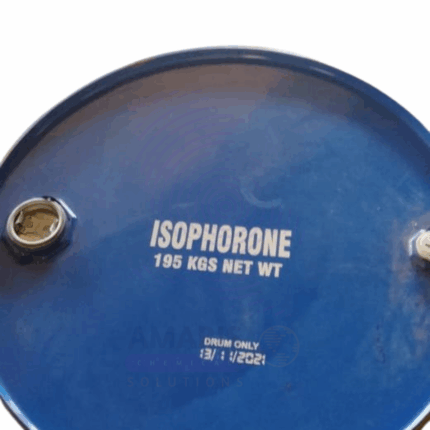“Hydrochloric Acid HCL” has been added to your cart. View cart
Butanol
Whatsapp Order
Butanol (also known as n-Butanol or Normal Butanol) is a clear, colorless liquid with a mild, alcoholic odor. It is a four-carbon primary alcohol with the chemical formula C4H10O. Butanol is moderately soluble in water and miscible with many organic solvents. Its physical and chemical properties make it a versatile solvent and chemical intermediate. Butanol indicates a high purity grade often used in industrial, pharmaceutical, and chemical synthesis applications.
Description
Table of Contents
Toggle
Butanol
Primary Uses
- Industrial Solvent
- Used as a solvent in the manufacture of coatings, paints, adhesives, and inks.
- Serves as a solvent in the production of plastics and plasticizers.
- Chemical Intermediate
- Employed in the synthesis of butyl acrylate, butyl acetate, and other esters.
- Utilized in producing glycol ethers and other specialty chemicals.
- Pharmaceuticals
- Acts as a solvent or extraction agent in pharmaceutical manufacturing processes.
- Used in formulations requiring high purity solvents.
- Fuel Additive
- Sometimes blended with gasoline or other fuels to improve combustion properties.
Secondary Uses
- Cosmetics and Personal Care
- Used as a solvent in some fragrances and nail care products.
- Laboratory Reagent
- Commonly used as a reagent or solvent in chemical laboratories for synthesis and analysis.
- Agricultural Chemicals
- Ingredient in some pesticide formulations as a carrier solvent.
PRODUCT KEY FEATURES
1. Basic Identification Attributes
- Chemical Name (IUPAC): Butan-1-ol
- Common/Trade Names: Butanol 99.4%, n-Butanol, Normal Butanol
- CAS Number: 71-36-3
- HS Code: 2905.14.00
- Molecular Formula: C4H10O
- Molecular Weight: 74.12 g/mol
- Synonyms:
- 1-Butanol
- n-Butyl alcohol
- Normal butanol
- Butyl alcohol
2. Physical & Chemical Properties
- Physical State: Clear, colorless liquid
- Odor: Mild, alcoholic odor
- Boiling Point: 117.7 °C
- Melting Point: -89.8 °C
- Density: 0.81 g/cm³ at 20 °C
- Flash Point: 35 °C (closed cup)
- Solubility: Slightly soluble in water (~7.7 g/100 mL at 20 °C); miscible with alcohol, ether, and organic solvents
- Vapor Pressure: 6.6 kPa at 20 °C
- Refractive Index: 1.397
3. Safety & Hazard Attributes
- Hazard Class (GHS): Flammable Liquid, Category 3
- NFPA Ratings:
- Health: 2
- Flammability: 3
- Reactivity: 0
- Exposure Limits:
- OSHA PEL: 100 ppm (TWA)
- ACGIH TLV: 20 ppm (TWA)
- Toxicity: Moderate toxicity; exposure may cause CNS effects, irritation to eyes and respiratory tract
- Reactivity: Stable under normal conditions; avoid strong oxidizers
4. Storage & Handling Attributes
- Storage Conditions: Store in a cool, dry, well-ventilated area away from heat and ignition sources
- Container Type: Airtight metal or chemical-resistant containers
- Shelf Life: 2–3 years under proper storage conditions
- Special Handling: Use grounding and bonding to prevent static discharge; avoid inhalation of vapors and prolonged skin contact
5. Regulatory & Compliance Attributes
- Regulatory Status: Listed under REACH, TSCA, and other major chemical inventories
- Transportation: Classified as a flammable liquid under DOT, IMDG, and IATA
- Waste Disposal: Dispose of according to local, state, and federal hazardous waste regulations
6. Environmental & Health Impact
- Ecotoxicity: Harmful to aquatic organisms; avoid release into the environment
- Persistence: Readily biodegradable
- Bioaccumulation: Low potential for bioaccumulation
- Carcinogenicity/Mutagenicity: Not classified as carcinogenic or mutagenic
SAFETY HANDLING PRECAUTIONS
Safety Handling Precautions
Personal Protective Equipment (PPE):
- Chemical-resistant gloves
- Safety goggles or face shield
- Protective clothing (lab coat or apron)
- Respiratory protection if ventilation is inadequate
Handling Measures:
- Avoid inhalation of vapors and contact with skin or eyes
- Use in well-ventilated areas
- Ground and bond containers to prevent static discharge
Storage Measures:
- Keep containers tightly closed
- Store away from heat, sparks, open flames, and incompatible materials
Hygiene Practices:
- Wash hands thoroughly after handling
- Do not eat, drink, or smoke in the work area
First Aid Measures
- Inhalation: Move person to fresh air immediately; seek medical attention if symptoms persist
- Skin Contact: Wash affected area thoroughly with soap and water; seek medical help if irritation occurs
- Eye Contact: Rinse cautiously with water for at least 15 minutes; obtain medical attention if irritation continues
- Ingestion: Rinse mouth with water; do not induce vomiting; seek immediate medical care
Firefighting Measures
- Fire Hazards: Highly flammable liquid and vapor; vapors can travel to ignition sources and flash back
- Extinguishing Media: Use alcohol-resistant foam, dry chemical powder, CO₂, or water spray
- Special Precautions: Firefighters should wear full protective gear and self-contained breathing apparatus (SCBA)
- Decomposition Products: May emit toxic fumes including carbon monoxide and carbon dioxide under fire conditions
Related products
Ammonium Acetate
Ammonium acetate is a white crystalline solid or granular powder that is highly soluble in water. It is the ammonium salt of acetic acid and commonly appears as a colorless, odorless compound. Ammonium acetate is widely used in laboratories, chemical synthesis, food industry, pharmaceuticals, and industrial applications due to its buffering capacity and ability to provide both ammonium and acetate ions in solution. It functions as a neutral salt and is valued for its role as a pH buffer, reagent, and stabilizer.
Deionized Water
Deionized Water (DI Water), also known as demineralized water, is highly purified water that has had almost all of its mineral ions (such as sodium, calcium, iron, copper, chloride, and sulfate) removed through ion exchange, reverse osmosis, or other purification methods. It is a clear, colorless, odorless liquid with extremely low electrical conductivity and is considered chemically pure. Deionized water is used in applications where water purity is critical, including pharmaceuticals, electronics, cosmetics, laboratory use, and various industrial processes. Its lack of minerals makes it highly reactive with contaminants, which makes it both useful and sensitive in technical applications.
Diethyl Glycol
Diethyl Glycol is a clear, colorless, hygroscopic, and viscous liquid with a mild odor. It is a diol with two hydroxyl groups, making it a versatile chemical intermediate and solvent. DEG is miscible with water, alcohols, and many organic solvents. It is widely used in the manufacture of plasticizers, solvents, resins, and as an intermediate in chemical syntheses. Due to its high boiling point and solvent properties, DEG finds broad applications across industrial, pharmaceutical, and cosmetic sectors.
Formic Acid
Formic Acid (methanoic acid) is the simplest carboxylic acid, typically supplied as an 85% aqueous solution. It is a colorless liquid with a pungent, penetrating odor and strong acidic properties. Formic Acid naturally occurs in insect stings and plant secretions and is widely used in chemical synthesis, agriculture, textile, leather, and rubber industries. The 85% solution balances potency and safe handling for industrial applications. It serves as a preservative, antibacterial agent, and intermediate chemical in numerous manufacturing processes.
Hydrochloric Acid HCL
Hydrochloric Acid HCL is a highly corrosive, strong mineral acid consisting of hydrogen chloride gas dissolved in water to a concentration of approximately 33% by weight. It appears as a clear, colorless to slightly yellow liquid with a sharp, pungent odor. HCl 33% is widely used in industrial, chemical, and laboratory applications due to its strong acidic properties, high reactivity, and versatility. It plays a crucial role in pH control, metal processing, chemical synthesis, and cleaning processes across numerous sectors.
Isophorone
Isophorone is a colorless to pale yellow liquid with a pungent, ketone-like odor. Chemically classified as a cyclic α,β-unsaturated ketone (3,5,5-trimethyl-2-cyclohexen-1-one), it is a solvent widely used in industrial applications. It has good solvency properties for resins, paints, coatings, and inks, combined with relatively slow evaporation compared to other ketones. Isophorone is miscible with many organic solvents and used extensively in manufacturing and chemical synthesis.
Mono Ethylene Glycol (MEG)
Mono Ethylene Glycol (MEG) is a colorless, odorless, viscous liquid with a sweet taste. It is a widely used organic compound belonging to the glycol family. MEG is primarily utilized as an antifreeze agent and a raw material in the production of polyester fibers and resins. Its excellent solvent properties, low volatility, and high boiling point make it valuable across various industrial applications.
MonoPropylene Glycol ( MPG)
Mono Propylene Glycol (MPG) is a clear, colorless, odorless, and slightly viscous liquid commonly used as a solvent, humectant, and antifreeze agent. It exhibits excellent moisture retention, low volatility, and high boiling point, making it suitable for a wide range of industrial, food, pharmaceutical, and cosmetic applications. MPG is valued for its low toxicity and biodegradability.


 Preservatives(food)
Preservatives(food) Flavor Enhancers
Flavor Enhancers Acidulants
Acidulants Sweeteners
Sweeteners Antioxidants
Antioxidants Colorants(food)
Colorants(food) Nutraceutical Ingredients (food)
Nutraceutical Ingredients (food) Nutrient Supplements
Nutrient Supplements Emulsifiers
Emulsifiers
 Collectors
Collectors Dust Suppressants
Dust Suppressants Explosives and Blasting Agents
Explosives and Blasting Agents Flocculants and Coagulants
Flocculants and Coagulants Frothers
Frothers Leaching Agents
Leaching Agents pH Modifiers
pH Modifiers Precious Metal Extraction Agents
Precious Metal Extraction Agents
 Antioxidants(plastic)
Antioxidants(plastic) Colorants (Pigments, Dyes)
Colorants (Pigments, Dyes) Fillers and Reinforcements
Fillers and Reinforcements Flame Retardants
Flame Retardants Monomers
Monomers Plasticizers
Plasticizers Polymerization Initiators
Polymerization Initiators Stabilizers (UV, Heat)
Stabilizers (UV, Heat)
 Antifoaming Agents
Antifoaming Agents Chelating Agents
Chelating Agents Coagulants and Flocculants
Coagulants and Flocculants Corrosion Inhibitors
Corrosion Inhibitors Disinfectants and Biocides
Disinfectants and Biocides Oxidizing Agents
Oxidizing Agents pH Adjusters
pH Adjusters Scale Inhibitors( water)
Scale Inhibitors( water)
 Antioxidants(cosmetic)
Antioxidants(cosmetic) Emollients
Emollients Fragrances and Essential Oils
Fragrances and Essential Oils Humectants
Humectants Preservatives
Preservatives Surfactants(cosmetic)
Surfactants(cosmetic) Thickeners
Thickeners UV Filters
UV Filters
 Fertilizers
Fertilizers Soil Conditioners
Soil Conditioners Plant Growth Regulators
Plant Growth Regulators Animal Feed Additives
Animal Feed Additives Biostimulants
Biostimulants Pesticides (Herbicides, Insecticides, Fungicides)
Pesticides (Herbicides, Insecticides, Fungicides)
 Active Pharmaceutical Ingredients (APIs)
Active Pharmaceutical Ingredients (APIs) Excipients
Excipients Solvents(pharmaceutical)
Solvents(pharmaceutical) Antibiotics
Antibiotics Antiseptics and Disinfectants
Antiseptics and Disinfectants Vaccine Adjuvants
Vaccine Adjuvants Nutraceutical Ingredients (pharmaceutical)
Nutraceutical Ingredients (pharmaceutical) Analgesics & Antipyretics
Analgesics & Antipyretics
 Analytical Reagents
Analytical Reagents Solvents(lab)
Solvents(lab) Chromatography Chemicals
Chromatography Chemicals Spectroscopy Reagents
Spectroscopy Reagents microbiology-and-cell-culture-reagents
microbiology-and-cell-culture-reagents Molecular Biology Reagents
Molecular Biology Reagents Biochemical Reagents
Biochemical Reagents Inorganic and Organic Standards
Inorganic and Organic Standards Laboratory Safety Chemicals
Laboratory Safety Chemicals Specialty Laboratory Chemicals(Special Laboratory Equipment)
Specialty Laboratory Chemicals(Special Laboratory Equipment)
 Demulsifiers
Demulsifiers Hydraulic Fracturing Fluids
Hydraulic Fracturing Fluids Scale Inhibitors(oil)
Scale Inhibitors(oil) Surfactants(oil)
Surfactants(oil) Drilling Fluids
Drilling Fluids
 Dyes and Pigments
Dyes and Pigments Bleaching Agents
Bleaching Agents Softening Agents
Softening Agents Finishing Agents
Finishing Agents Antistatic Agents
Antistatic Agents
 Admixtures
Admixtures Waterproofing Agents
Waterproofing Agents Sealants and Adhesives
Sealants and Adhesives Curing Compounds
Curing Compounds Concrete Repair Chemicals
Concrete Repair Chemicals Anti-Corrosion Coatings
Anti-Corrosion Coatings
 Surfactants(cleaning)
Surfactants(cleaning) Builders
Builders Enzymes
Enzymes Solvents (Cleaning)
Solvents (Cleaning) Fragrances
Fragrances
 Electronic Chemicals
Electronic Chemicals Catalysts
Catalysts Lubricants
Lubricants Photographic Chemicals
Photographic Chemicals Refrigerants
Refrigerants Automotive chemicals
Automotive chemicals Pyrotechnic Chemicals
Pyrotechnic Chemicals
 Biodegradable Surfactants
Biodegradable Surfactants Bio-based Solvents
Bio-based Solvents Renewable Polymers
Renewable Polymers Carbon Capture Chemicals
Carbon Capture Chemicals Wastewater Treatment Chemicals
Wastewater Treatment Chemicals
 Pigments
Pigments Solvents(paint)
Solvents(paint) Specialty Coatings
Specialty Coatings Binders/Resins
Binders/Resins Additives
Additives Driers
Driers Anti-Corrosion Agents
Anti-Corrosion Agents Functional Coatings
Functional Coatings Application-Specific Coatings
Application-Specific Coatings
 Fresh Herbs
Fresh Herbs Ground Spices
Ground Spices Whole Spices
Whole Spices Spice Blends
Spice Blends Dried Herbs
Dried Herbs
 Leavening Agents
Leavening Agents Dough Conditioners
Dough Conditioners Flour Treatments
Flour Treatments Fat Replacers
Fat Replacers Decoratives
Decoratives Preservatives(baking)
Preservatives(baking)
 Plasticizers & Softeners
Plasticizers & Softeners Reinforcing Agents
Reinforcing Agents Adhesion Promoters
Adhesion Promoters Vulcanizing Agents
Vulcanizing Agents Antidegradants
Antidegradants Blowing Agents
Blowing Agents Fillers & Extenders
Fillers & Extenders Accelerators & Retarders
Accelerators & Retarders